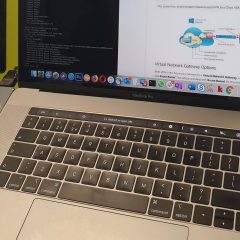Error 1722 There is a problem with this Windows Installer package.
Error 1722 KB ID 0000985 Problem Error 1722 is a pretty ‘generic’ windows installer package error. When attempting to install the AnyConnect client software this happened; Error 1722. There is a problem with this Windows Installer package. A program run as part of the setup did not finish as expected. Contact your support personnel or package vendor. Action VACon_Install, location: C:Program FilesCiscoCisco AnyConnect...
Using 32 and 64 Bit WMI Filters For Group Policy
KB ID 0001341 Problem I was trying to deploy some client AV packages today, there was an x86 version (x32 Bit) and a x64 bit version of the client software. As I was deploying the software via Group Policy I needed to write a different policy for each package. Then I needed to make sure the x32 bit client only deployed to x32 bit machines, and the 64 bit client only deployed to x64 bit machines. To do that you need a simple WMI...
Deploy the Trend Worry Free Business Client via Group Policy
KB ID 0000491 Problem Trend Worry Free is a nice product, though to deploy the client software out to your machines, you need them to be switched on, have the firewalls off, and the remote registry service running. You can of course connect the clients to the web portal and install the client on a machine by machine basis, (default https://servername:4343), but if you are rolling out a lot of machines this can get tedious. So you can...
Terminal Server / Remote Desktop Services Server – Printer Not Working (Adding Print Drivers)
KB ID 0000850 Problem Windows Server 2008 R2 and 2012 are a lot better with printing support over remote desktop, that their predecessors were. But to be able to print to your remote users ‘local’ machines. The TS/RDP server still likes to have the correct drivers installed. What about Easy Print? Easy Print (Introduced with Server 2008 R2) is a ‘proxy’ service that simply sends all print processes to the...
WDS – “The Network Path was not found” when adding an Unattend file
KB ID 0000487 Problem Saw this last week, while trying to use an unattended file for the roll out of some machines with WDS. Every time you try and enter a value you get “The network path was not found” error, no combination of file path or UNC path seems to cure the problem. Solution This is a “work around” not a fix, essentially it will not accept any value you put into the path without throwing and error. If...





